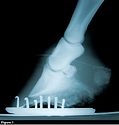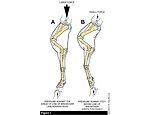Advertise Follow Us
Trimming
Hoof Beats
Conformational Corrections in Foals
Hoof-care professionals and horse owners can resolve early developmental issues through team approach
Read More
Research Journal: December 2020
The information, ideas and opinions expressed are those of the author and do not necessarily represent those of the United States Department of Agriculture.
Read More
Equine Reciprocating Systems
Hoof Trim has Varied Effects on the Equine Forelimb
Demonstrations and real-life examples challenge farriers to think about their approach to solving foot problems
Read More









